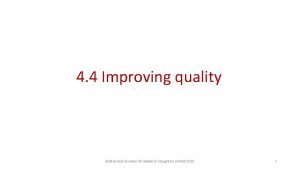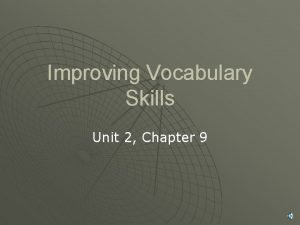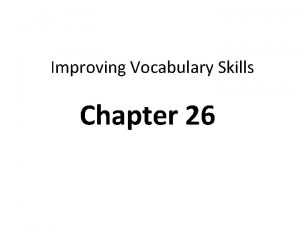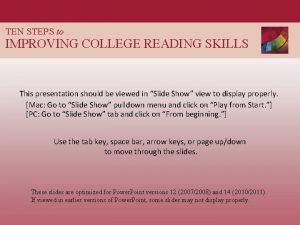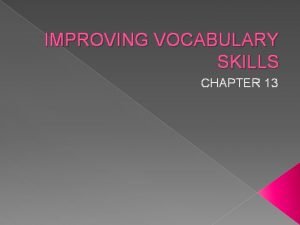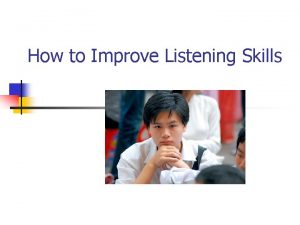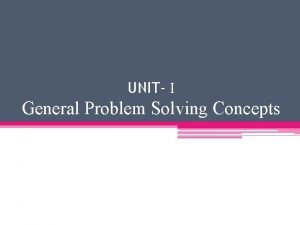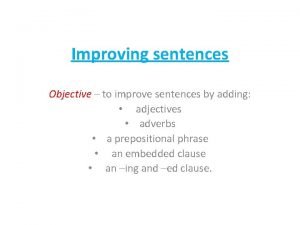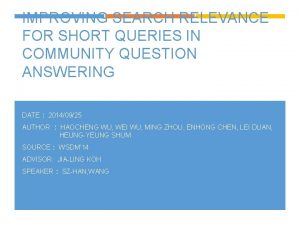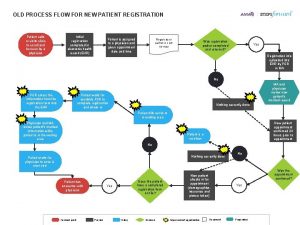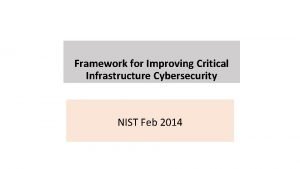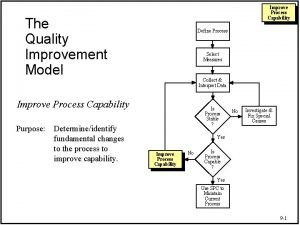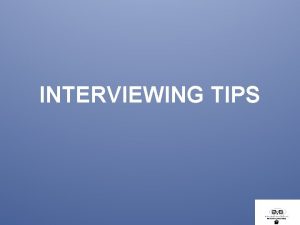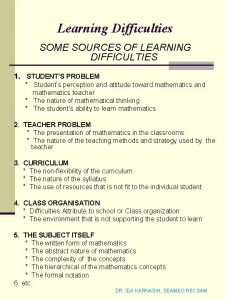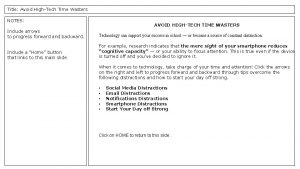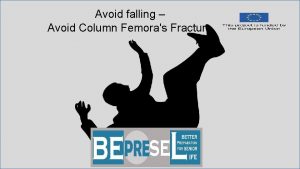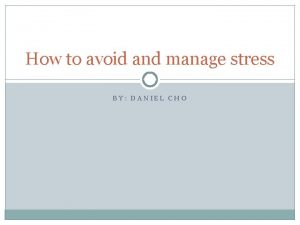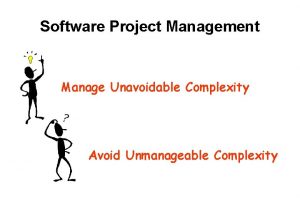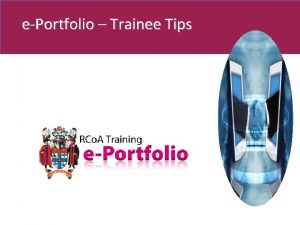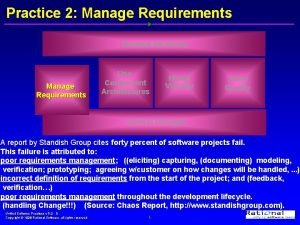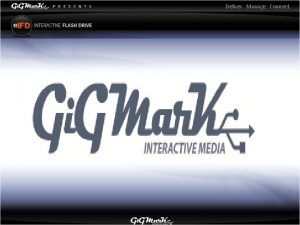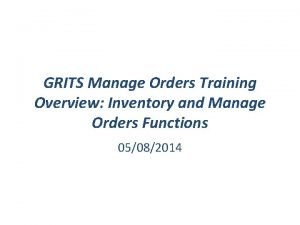Improving skills II Tips to Manage difficulties avoid



































- Slides: 35

Improving skills - II : Tips to Manage difficulties & avoid complications at CS Dr. Haresh U. Doshi MD (Gynec), Ph. D (Med), FICOG , Diploma(USG), PGDMLS, PGCML PGDCR, PGDHHM Professor & Head of Ob. Gyn GCS Medical college & Hospital Ahmedabad

Key Points in Reducing Complications • Anticipation is the key to safe Cesarean section. • Avoid undue haste at every step, particularly in delivery of fetus • Good assistance (trained assistant), preferably a professional colleague • Check suction machine, O 2 supply & emergency drugs availability before starting CS

Key Points in Reducing Complications • Blood (PCV), 1 unit kept ‘X’ matched & ready. • I/V Ringer lactate at least 750 ml before anesthesia is given ( Although hypotension is quite less with sensorcaine, adequate I/V fluid preop cause hemo-dilution & decreases RBC loss after delivery - PPH) • Proper antibiotics in adequate dosage.

Cesarean section – Opening the abdomen - Pffannensteil incision / Modified pffannensteil - Even if the previous scar is vertical, keep transverse 2 nd time, 2 vertical makes wall weak - Adequate Skin incision: Minimum Allis size : Length of routine Allis’ forceps 15 cm 10 cm diam. BPD is 9. 4 cm , so head can easily be delivered.

Cesarean section – Opening the abdomen - Excise the abdominal scar of previous CS while opening the abdomen (except emergency), NOT at the end, this gives a clean scar - Muscles separated from the sheath adequately, particularly from upper part - Sharp dissection for muscles in previous CS

Cesarean section – Opening the abdomen Clues for anticipating bad adhesions 1. P/V in first trimester – Do it always in previous CS case & check for uterine mobility & record it in case paper 2. Patient complains of constant pain in abdomen throughout pregnancy (more than usual). 3. After anesthesia is given, if you notice, abdomen at the site of scar is indrawn (if bad adhesions) OR catch the anterior abdominal

Opening the Abdomen • Parietal peritoneum opened as high as possible (in advanced labour bladder may be high) • • In previous scar there may be - Shallow Uterovesical pouch - 2 layers of visceral peritoneum If there is difficulty in entering the abdomen, go higher up & laterally, dense adhesions of uterus with abdominal wall should be cut between two clamps/artery forceps

Tips for cesarean – Uterine incision must be adequate • Adequacy of the uterine incision should be checked before delivering the head • I repeat Adequacy of the uterine incision should be checked • Undue haste is to be avoided. • Under any anesthesia incision delivery interval upto 180 seconds quite safe. - JPOG 2010

Uterine Incision Cutting - à After incising with knife, extending with scissors gives adequate space & cut in desired direction i. e. curved upwards à Good margins for suturing à More bleeding but it can be controlled by applying Allis forceps or sponge holding forceps Cut & sutured fibers gives Strong scar

Uterine Incision Finger Splitting àRapid & easy à Less bleeding ! à More extension Finger splitting though fast, leads to direction downwards due to anatomical reasons & as less space is available due to muscle elasticity, there are more chances of extension & bleeding – angle tear

Tips for all cesarean • Insert the full hand well below the head ( Don’t keep thumb outside) • Have the proper grip (Biparietal) • Flex the head, elevate it towards the incision and deliver it - shoe horn technique • Anterior rotation not must • Lateral flexion is sufficient • Fundal pressure if required

Head at incision site- not delivering ! Never hurry - Panic & aimless attempts are futile and dangerous Identify the problem & deal with it. 1. Is skin incision less ? Extend it 2. Are the muscles tight ? Cut Recti muscles - Maylard incision, one side/both sides ; half/full Cut lower edge of rectus sheath vertically

Head at incision site- not delivering ! 3. Is uterine incision small ? Extend it J , U shape (or inverted T shape) J shape or U shape should be kept from the beginning i. e. Prematurity, Elective LSCS – as lower segment is poorly formed à Intravenous bolus of dilute solution of Nitroglycerine (150 -300 ug). This is available in ICU ( Institute set up).

Head at incision site- not delivering ! 4. Is fundal pressure inadequate ? Importance of good fundal pressure cannot be overemphasized. 5. Is head deflexed ? Flex it & then try to deliver. Deflexed head presents larger diameter.

Deeply engaged head 1. Push from below 2. Modified Patwardhan method - EASY ! 3. Lift the fetal shoulders up, passing hand inside the uterus. This moves the whole uterus up & might lift the head out of pelvis. (There are Devices for lifting the head, but if you have not used it, don’t try now)

Deeply engaged head 1. Push from below - Anticipate this - Full vaginal preparation to prevent infection - Assistant ready from the beginning - Push after anesthesia but before incision is kept

Deeply engaged head 2. Modified Patwardhan method – delivering as breech Pull method Original Patwardhan for anterior back Deliver one shoulder, then second one Deliver lower part of the baby by doubling up Modified Patwardhan for posterior back Pass the hand up in the uterus, Catch the anterior foot & deliver as breech Pull the head up from pelvis last, it comes out easily

High Floating Head • Let the liquor drain out • Wait till head descends to the incision site • Head slips from the hand • Have the proper grip • Good Fundal pressure is must

High Floating Head Internal version & breech delivery Use of vacuum extractor à Use of forceps If you are not doing instrumental vaginal delivery don’t try to use it at cesarean section !

LSCS - Breech Presentation • Cesarean section in Breech presentation is for baby so its safety is of utmost mportance • Adequate uterine incision – cutting the muscles (not splitting), gives adequate space • Breech extraction method(vaginal delivery) is used but one has to be gentle Head can be delivered by modified MSV technique

LSCS - Shoulder presentation • Lower segment transverse incision is sufficient (Previously classical incision was recommended) • Deliver as breech by passing hand in the uterus & catching the leg (avoid shaking hands with baby & accidental delivery of the arm should be replaced forthwith). Prior USG helps in guiding the hand

LSCS - Multiple pregnancy • More Twins are delivered by cesarean section at present. • Adequate incision is must - Prematurity, lower segment not wellformed • Deliver as per presentation and station • Anterior fetus is delivered first

Placental delivery - Avoid routine MRP It can cause more bleeding & more infection - Timely given ecbolics (oxytocin, methergin) separates placenta early - While waiting for placenta to separate on its own you can catch the angles & lower edge. ( Close your eyes & then pass hand in the uterus to have the experience (learn) of MRP ! )

Uterine suturing Always exteriorize for suturing If you are not doing it routinely at least do it when there is excessive bleeding Advantages • Ease of suturing • Better control of hemorrhage • No injury to bowel (particularly at the angle) Disadvantages of exteriorizing are only theoretical

Single layer closure V/S double layer closure ? Since > 20 years I believe , practice & teach single layer. EBM : There are no enough studies at present to recommend either single layer or double layer closure as better method. The above discussion is irrelevant when you are not practicing VBAC & doing repeat elective CS in all cases of previous cesaraen sections !

Method of suturing Continuous locking suture is traditionally practiced (for first or single layer), although it can cause somewhat ischemic necrosis, they are best for hemostasis. For Angles - Lateral to medial & not below upward, If there is active bleeder at the angle suture it separately Edges – If you require to take extra stitches for bleeding from

Reducing Hemorrhage • Proper and timely ecbolic – Oxytocin, M. ergometrine • Prompt and adequate suturing • Exteriorize and massage • Bimanual compression, hot mops • Prostaglandins - I/M, Intramyometrial ( Intramyometrial PG is superior to I/M route, only in cases of shock & when Internal iliac artery ligation is aready done )

Controlling Hemorrhage Tips of managing excessive hemorrhage at cesarean section is discussed under the heading of obstetric emergencies along with the topic of PPH. (Presentation 6)

Prevention of Injuries Bladder : • • Be careful while entering the peritoneal cavity. • • In case of previous CS always do sharp dissection Empty the bladder before CS - if catheter can’t be n empty it by needle puncture and syringe. Beware of enthusiastic assistant holding Doyens r Slightly higher incision in advanced labour If doubt, check and repair on table “BLADDER IS A VERY FORGIVING ORGAN”

Prevention of Injuries Ureter : • • Vary rare 0. 09% In an attempt to control angle bleeding or from down ward extended tear or dealing with broad ligament hem “Patients do not die from ureteric injury immedia but can die from hemorrhage. ” So even if you have injured the ureter in crisis, w dealing with severe hemorrhage, it is pardonable

Prevention of Fetal Injuries • Knife injury to soft parts Be gentle & incise the uterus slowly. In advanced/obstructed labour lower segment can be papery thin. Palpate before you cut to know the thickness • Injuries during delivery “Fetal injuries amounts negligence & liable Adequate incisiontoand slow delivery to litigation” avoids

ANGLE TEAR • • • A – Assistant N – Needle holder G – Good Suction L – Light E - Exposure • Angle in Ob. Gy should be respected like Angles

“Ideally each obstetrician should be able to review his or her rate and type of complications so that continuous improvement in technique is fostered” - Charles Stedman

“To improve is to change; To be perfect is to change often” - Winston Churchill

Thank You www. plexusmd. com/drhareshdoshi Thank You doshiharesh@hotmail. com NEBULA GRAPHIC
 Difficulties of improving quality
Difficulties of improving quality Improving vocabulary skills chapter 9
Improving vocabulary skills chapter 9 Is drivers a verb
Is drivers a verb Ten steps to improving college reading skills
Ten steps to improving college reading skills Ten steps to improving college reading skills answer key
Ten steps to improving college reading skills answer key Chapter 13 matching words with definitions
Chapter 13 matching words with definitions Improving vocabulary skills 4th edition answer key
Improving vocabulary skills 4th edition answer key Why are refusal skills important
Why are refusal skills important What are the difficulties in listening
What are the difficulties in listening Financial difficulties are commonly caused by overspending
Financial difficulties are commonly caused by overspending 切法寫默查
切法寫默查 Interactivity chart problem solving
Interactivity chart problem solving Ontario skills passport
Ontario skills passport Intrapersonal relationship skills
Intrapersonal relationship skills What is soft skills
What is soft skills A sense of belonging improving student retention
A sense of belonging improving student retention Chapter 12 lesson 4 fitness safety and avoiding injuries
Chapter 12 lesson 4 fitness safety and avoiding injuries Boring sentences to improve
Boring sentences to improve Improving search relevance
Improving search relevance What is hill's prescription for improving one's vocabulary
What is hill's prescription for improving one's vocabulary Improving student learning one teacher at a time
Improving student learning one teacher at a time Improving own learning and performance examples
Improving own learning and performance examples Patient registration workflow
Patient registration workflow Expansive synoynm
Expansive synoynm Aliens meaning
Aliens meaning Nist framework for improving critical infrastructure
Nist framework for improving critical infrastructure Cas jasig
Cas jasig Using assessment data for improving teaching practice
Using assessment data for improving teaching practice Improving software economics set 1
Improving software economics set 1 Jonathan washko
Jonathan washko What is the use of pi
What is the use of pi Improving process capability means;
Improving process capability means; Gap model of service quality with examples
Gap model of service quality with examples Chapter 3 benefits of physical activity
Chapter 3 benefits of physical activity Bronson intranet
Bronson intranet Nist cybersecurity framework roadmap
Nist cybersecurity framework roadmap
